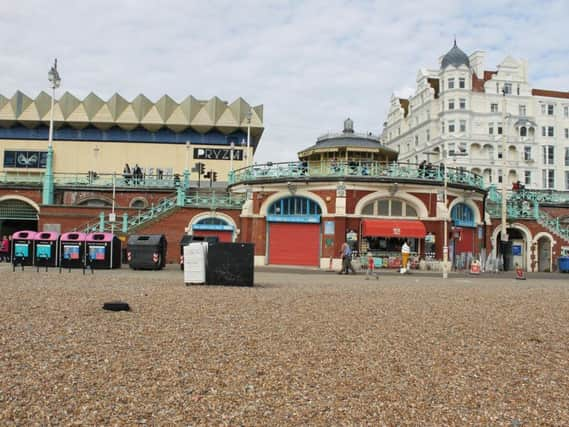Cost of works on Shelter Hall could reach £19m


The authority had originally been working to a budget of £10.6m to save the seafront road from collapse and recreate Shelter Hall on the seafront at the end of West Street.
But Brighton and Hove City Council revealed that so far £12.2m has been spent on the project, and the authority is set to seek a further £7m to finish the work.
Advertisement
Hide AdAdvertisement
Hide AdIt said this meant the project's completion will also be delayed to autumn 2019; it was initially hoped the work would be finished by this summer.
A report to the policy, resources and growth committee, which meets on Thursday (February 8), set out the reasons for the proposed cash injection.
It said the extra cash would be used to 'upgrade the quality of the Shelter Hall replacement building to make it more attractive to investors'. The council said the building is likely to be used for a 'quality restaurant'.
The report added that additional money would cover the 'extra cost of complex engineering work' needed to stabilise the ground, overcome 'underground obstacles' and deal with historic structures that were 'in a worse state than expected'.
Advertisement
Hide AdAdvertisement
Hide AdThe project started because surveys had shown the seafront road to be weak and in danger of eventual collapse.
Works to strengthen the foundations of the road meant Shelter Hall would have had to be demolished, so the council used the opportunity to recreate the building to make it 'a bigger economic asset for the seafront'.
Councillor Gill Mitchell, lead member for environment, transport and sustainability, said: “We’re trying to save a crucial road so there’s no avoiding these extra costs and timescale. The cost to the city of it eventually failing are incalculable – but certainly significantly more than £19m.
"We want this project to deliver real, long-term benefits for the city both in terms of transport infrastructure, the local economy and the preservation of our seafront heritage. So the extra spending will be worth it in terms of very large returns to the seafront, its businesses and the wider city.”
Advertisement
Hide AdAdvertisement
Hide AdA finance report to the policy, resources and growth committee on Thursday suggests raising most of the cash from central government. The total would comprise £4m of Department for Transport grants, £2m of borrowing and £1m from other council sources.
So far the scheme has been mainly funded by a £9m government grant which was ring-fenced for the Shelter Hall project. Council officials say at the time the bid was made in 2015 it was not possible fully to assess risk factors such as ground conditions, the full state of historic structures and uncharted underground services.
The council gave examples of the factors which required extra funding, which included:
- A huge engineering operation to stabilise the ground and structures, involving sinking dozens of metre-thick concrete piles up to 17 metres into the ground
Advertisement
Hide AdAdvertisement
Hide Ad- Maintaining traffic flows on the A259 in order to preserve access to local businesses and avoid damage to the local economy caused by the works
- Improvements to the replacement Shelter Hall’s specification to boost its revenue-generation by increasing its floorspace with a larger building and mezzanine floor
- Provision of larger public toilets
- An historically faithful restoration of the Grade-II listed kiosk above the Hall, which was more rotten than anticipated
- Obstacles hidden underground, including three old sea walls
- And the building and road structure being in a worse condition than could have been foreseen